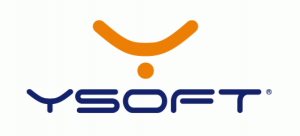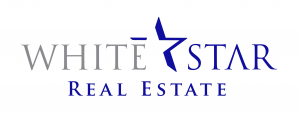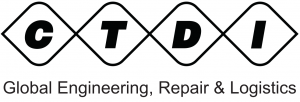Remote life: How can companies benefit from an adaptive or hybrid workplace?
11.05.2021Company: Deloitte
The current situation shows how workforces must adapt to working across different locations with much higher proportions working from home/remotely. This has impact not only on how teams work together, but also how organizations can benefit from an adaptive or hybrid workplace. A number of benefits have been recognized for an adaptive workplace – the combination of working in the office and working from home – such as a higher degree of engagement, higher productivity, and better well-being. However, managers and team leaders struggle to best address and ensure that employees have the right support when needed. Hence, a combination of workforce expertise and AI-driven approaches help to provide the relevant information to managers when making their decisions about how to best support their teams and employees. These AI approaches benefit from increased availability of objective data that gives managers unbiased insights about how their teams are working and where and when help is needed.
Let’s see how it works in practice
The following series of use cases will give you deep insight about how organisations have been coping with the pressure on their employees and what has made them more resilient. Furthermore, each use case demonstrates what has helped the organization to embrace their workforce and support their engagement.
Use case No. 1: Recognition of unhealthy working habits
Organisations and their employees are working to ensure that their performance and productivity are high. However, employees working on different teams have different tasks that require a different level of focus. Over time their productivity can change. If it goes unnoticed and is not acted upon, it can slip. Therefore, the role of managers is crucial in helping and supporting their employees, especially when employees try to offset changes in productivity by working long, but unproductive hours. Over a long period of time, this can result in negative impact on employees’ well-being (alongside high stress levels) and low work efficiency. In the office, the first signs of this slip can be relatively easy to recognise when managers are paying attention to employees’ moods and how they interact. This is significantly harder when employees are working remotely, where face-to-face contact is missing. Managers must pay attention to small nuances and can greatly benefit from objective data that are routinely gathered about teams’ performances.
We worked with clients to dive deeper into how their teams work and particularly whether their employees are showing signs of unhealthy working habits. Some of the signs we look for are extra-long hours for a prolonged period or even shorter but periodical long hours at the end of the week. By recognizing these signs, managers can help their teams to better manage the workload or even try to understand the reasons behind this unhealthy work behaviour.
Before we focus on the clients’ operations and the benefits to their service delivery, we need to answer these questions:
- How much more time are your employees working compared to before?
- What could be the consequences of their working habits on their performance and the delivery of a service?
The benefits for clients:
- Quickly identify which teams are having problems with overloaded employees and potential burnout
- Swiftly determine in which teams the service quality could decrease because of long hours
- Recognize which teams have good or bad working habits (consistent vs. inconsistent work)
Example #1: The dashboard shows how we help clients to understand working habits from different perspectives

Lessons learned:
- Employees benefit by knowing that their managers care about their well-being.
- Objective information about how employees work is needed to help them prioritize their work.
- Managers realised benefits of identifying problems that their employees are dealing with.
Use case No. 2: Eliminate unnecessary work – reporting reduction
In the current digital era, it is very easy and common to produce and circulate a large amount of information within organisations. These digital documents can overwhelm employees that are supposed to be working with them. This new norm is harmful for organisations because more documents require more time to produce and more time to read, hence they are costly. Even though organisations may have a higher quantity of information, they would benefit more from quality information. All these documents increase the workload, but in the end, it is hard to judge which are well-received and which are ignored. Organisations should focus on this to streamline their business and operations.
Our client’s CFO set a high target of reducing produced reports by 30% to eliminate unnecessary or overly complicated reports. Additionally, the CFO looked for cost, FTE, and resource savings to make the organization leaner and more competitive. The main obstacles were a lack of knowledge about which reports are important to employees and which content can be reduced or consolidated. By working closely with this client and using our automated tool, we were able to quickly identify redundant reports and select potential reports for automation to ease the workload of employees.
Before we focus on the client’s operations and the benefits to their service delivery, we need to answer these questions:
- How many reports can be easily eliminated?
- How many reports are used/read by employees?
- How much time do employees spend with reports?
- Do employees use the reports on a regular basis?
- How many often-used reports can be automated?
The benefits for clients:
- Quickly determine which reports can be eliminated
- Objective and fast assessment of reports’ usage without human bias
- Quantify the time needed for working with reports when other IT systems will not provide sufficient information
- Swiftly identify reports as candidates for automation that employees read and use for a long time
Example #2: The summary table shows a steep decline in usage of reports during a month

Lessons learned:
- Engage early with the stakeholders and employees to explain the expected benefits of the change.
- Avoid internal bias about reports’ usage by utilizing automatic and objective tools.
- Show across organisation where quick wins and savings can be made to reduce the extra work
How to efficiently monitor and improve remote work?
It can be done using Deloitte’s novel approach and our APAT tool (Automatic Process Analytics Tool), which checks the work activity on a computer, monitors the workload of internal teams and identifies routine activities for individuals and teams. The collected data is used to suggest processes where automation and enhancement are desirable, all in accordance with legislative and security requirements.
Michal Petr
mpetr@deloittece.com
Jan Hejtmánek
jhejtmanek@deloittece.com
Tags: Finance | Human Resources |









